Do you all know about ‘Ota ‘ika?
‘Ota ‘ika is a traditional dish widely eaten in Oceania, starting with Polynesia.
It is classified as a marinated salad dish that includes marinated raw fish and vegetables.
The islands each have their own food culture, and there are various attractions.
This time, I will introduce such ʻOta ʻika!
Please watch until the very end!
Also, TasteTune introduces global cuisine while also sharing music that pairs well with those dishes♪
You can stream it on YouTube, Spotify, and other platforms, so enjoy it along with this article!
What is ʻOta ʻika?
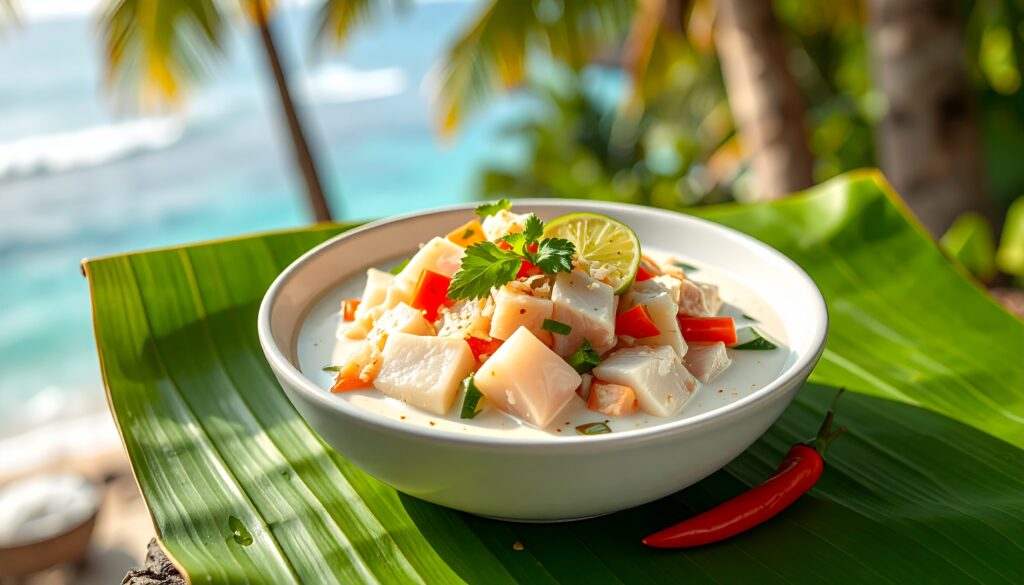
ʻOta ʻika is a traditional dish widely eaten throughout Oceania, including Polynesia.
The primary cooking method involves lightly marinating raw fish in citrus juice for “partial cooking” (where only the surface is altered by acid).
It involves mixing it with coconut milk and adding vegetables and seasonings.
And the name, ingredients, and style of ʻOta ʻika vary by region.
For example, it is also called “ika mata” in the Cook Islands, “oka iʻa” in Samoa, and “kokoda” in Fiji.
ʻOta ʻika is appealing for its balance of savory umami and tangy acidity from the fish, complemented by the mellow richness of coconut.
With every bite, you'll enjoy a refreshing taste reminiscent of a tropical sea breeze.
Raw fish marinated in lemon or lime juice develops a texture where the surface is lightly “cooked.”
Therefore, you can enjoy a texture that's somewhere between sashimi and_ ceviche.
Furthermore, the citrus acidity completely eliminates the fishy odor and enhances the refreshing flavor.
And adding coconut milk there gently envelops the tartness.
This gives the overall flavor a creamy, gentle, and tropical impression.
The History of ʻOta ʻika
The prototype of the ʻOta ʻika
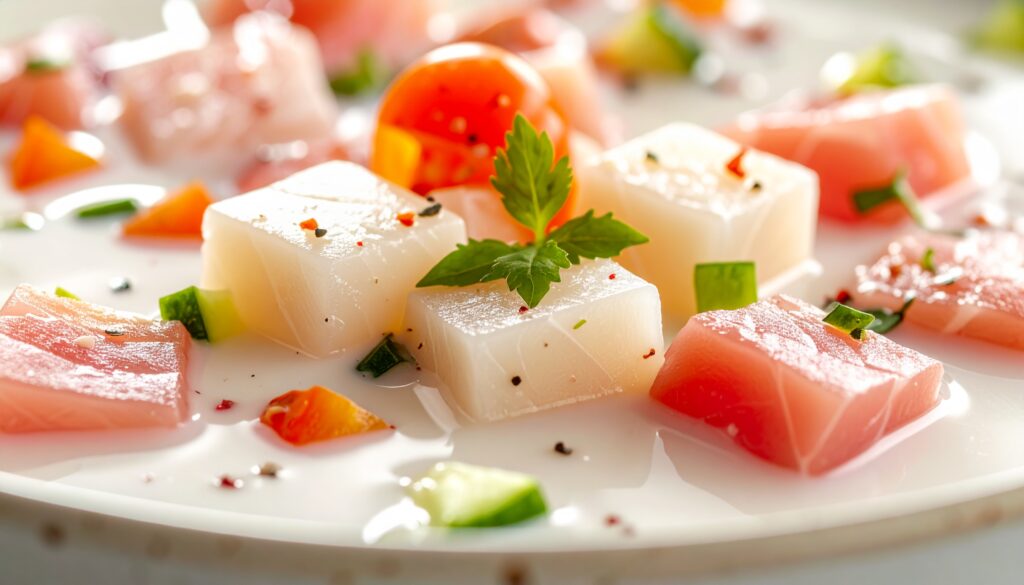
The origins of this dish lie in the voyages of the Polynesians.
From around the turn of the era through the Middle Ages, Polynesian peoples are believed to have spread through canoe voyages.
In the process, marine resources and coconuts were transplanted and utilized, becoming established across the islands.
It is also believed that techniques for preparing fish in a state close to raw have been used by seafaring peoples since ancient times.
Since ancient times, the diet on the islands has primarily depended on locally available resources.
Among these, fish served as an important source of protein, and techniques for harvesting coastal and reef fish and shellfish developed.
At the same time, seasoning and preservation methods also developed.
Furthermore, marinating techniques using citrus juice are related to the period when citrus fruits spread from their place of origin.
Completion of the ʻOta ʻika
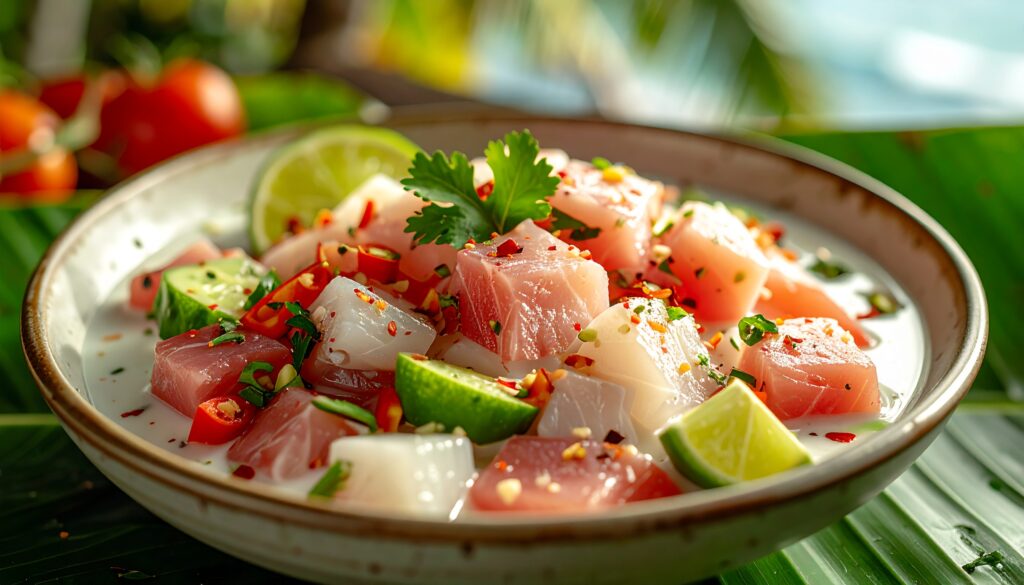
From the early modern period onward, the arrival of Europeans led to a diversification of ingredients and seasonings.
Sugar, citrus fruits (oranges), Western spices, preservation techniques, and even foreign crops were introduced.
Citrus fruits, in particular, were introduced to the islands through these processes of trade and contact and began to be cultivated locally.
This likely strengthened the technique of marinating raw fish in acid.
During this season, the ʻOta ʻika dish known as Tonga's national cuisine emerges.
Other local variations also emerge, such as Samoa's “oka iʻa,” Fiji's “kokoda,” and Tahiti's “poisson cru.”
Since the 20th century, with the development of transportation and communication, ʻOta ʻika dishes have spread widely.
Through immigrant and ethnic networks, it spread to cities in New Zealand and Australia, where it is recognized as a cultural symbol dish of Pacific Islander communities.
Additionally, in modern times, one can also find a “modern Polynesian” version of ʻOta ʻika that preserves traditional cooking methods while changing ingredients and presentation.
Variations include changing the type of citrus or adding herbs and avocado.
Interesting stories and trivia about ʻOta ʻika
Meaning of the Name
“ʻOta” means “life” in Tongan, and ‘ʻika’ means “fish.”
The name perfectly captures the characteristic of raw fish used almost entirely as is in Ota squid.
Meanwhile, in Samoan it is called “Oka i‘a,” and in Fijian it is called “Kokoda,” but both share the same root.
A dish that is indispensable at celebratory gatherings
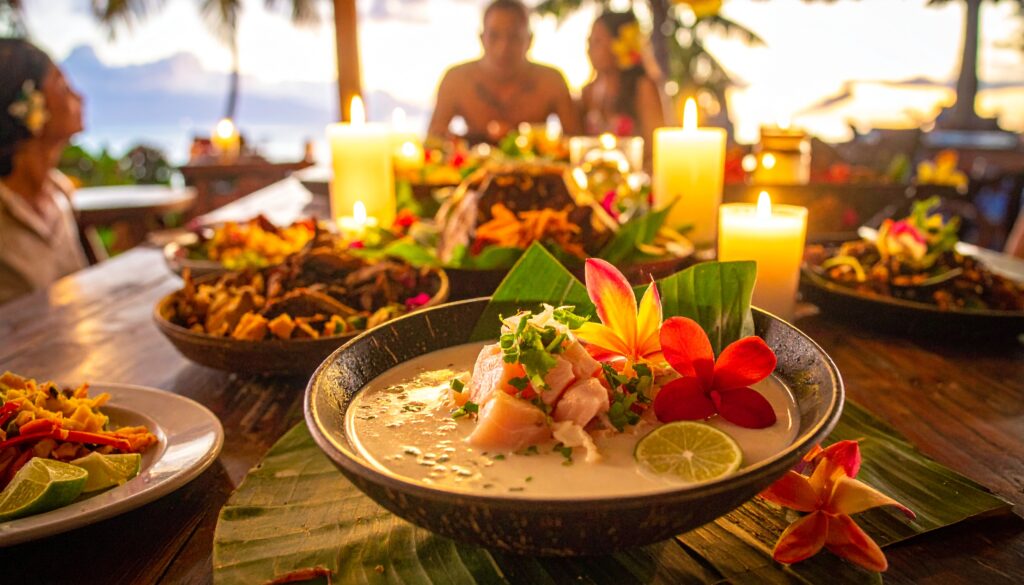
In Tonga, it is almost always present at family gatherings, such as weddings, funerals, and Sunday lunches after church.
And many are served as the very first cold dish on the table laden with food.
Therefore, it is considered a dish symbolizing “freshness,” “purification,” and “new beginnings.”
The Culture of Trust Embodied in Eating Freshly Made Food
In Polynesia, it is believed that “cooking reflects the sincerity of the person who prepares it,” and raw fish dishes in particular are seen as a sign of trust.
Therefore, serving raw fish is said to signify “I have nothing to hide from you.”
For this reason,
- Having someone make you handmade ʻOta ʻika is a sign of affection.
- When serving important guests, it's ideal to use fish you caught yourself.
this value persists.
The aspect of “cooking as a male pursuit”
In traditional Tongan and Samoan societies, fishing and non-cooking methods (such as marinating) were the responsibility of men.
On the other hand, cooking with fire was often considered a woman's role, and ʻOta ʻika was regarded as a dish that demonstrated a man's skill.
Therefore, a traditional proposal culture where men make ʻOta ʻika using fish they caught themselves remains in some regions.
With the spread of refrigerators, it became an everyday food.
Before the mid-20th century, ʻOta ʻika was a special treat eaten immediately after fishing.
The reason is simple: they had no means to chill and preserve fish.
However, the spread of electricity and refrigeration equipment across South Pacific nations during the 1960s and 1970s enabled
- Refrigerating fish caught in bulk
- Commercialization of Canned Coconut Milk
transforming it into an everyday dish easily prepared at home.
Nowadays, it appears at food stalls, school events, and party dishes.
ʻOta ʻika (Ota Squid) — Recipe for Japan
Ingredients (serves 2-3)
- White-fleshed fish for sashimi (tuna, amberjack, sea bass, etc.)... Approximately 200g
- Onion (thinly sliced)… 1/4 onion
- Tomato (diced)… 1
- Cucumber (thinly sliced)… 1/2 cucumber
- Lime juice (or lemon juice)… 2 to 3 tablespoons
- Coconut milk (canned, unsweetened type)… 100ml
- Salt... 1/3 to 1/2 teaspoon (adjust to taste)
- Black pepper... a pinch
- Red chili peppers (sliced, to taste)... to taste
- Italian parsley or cilantro (for garnish)... a little
Preparation and Safety Points
- Always use fish labeled “for sashimi” or “for raw consumption.”
Fish that has been frozen and thawed carries a low risk of parasites and is highly safe. - Keep refrigerated until just before cooking.
Marinating in acid does not sterilize, so temperature control is crucial. - Eat within two hours of making.
This dish is not suitable for storage.
How to make them
- Cut the fish
Cut into bite-sized pieces (about 1.5 to 2 cm square). - Marinate
Place the fish, lime juice, and salt in a bowl and refrigerate for 15 to 20 minutes.
→ The surface turns whitish and takes on a slightly “cooked” appearance as if lightly seared by acid. - Add vegetables
Add the onion, tomato, and cucumber, and mix gently. - Add coconut milk
Pour in the coconut milk and gently toss to combine.
Taste the seasoning and adjust with salt and pepper. - Finishing
Serve in a bowl, garnished with parsley, cilantro, and chili peppers.
Serve while cold.
Arrangement Tips
- Adding avocado or pineapple creates a fruity finish.
- For extra heat, add a few sliced chili peppers or a small amount of chili sauce.
- Serve with rice or taro chips for a South Pacific-style “main course.”
Summary
How did you like it?
This time we introduced ʻOta ʻika from the Oceania region!
Its tropical appearance, reminiscent of the southern regions, and its distinctive flavor profile featuring raw fish and coconut milk were truly appealing!
Now, regarding this ʻOta ʻika, it seems there are several restaurants in Japan that serve it.
Please come enjoy the authentic taste at our restaurant!
As usual, I've also included the recipe.
While you need to be careful about parasites, it's relatively easy to make!
Enjoy the taste of the tropics at home!
Thank you for watching until the very end!
I'd be thrilled if even one more person reading this article becomes interested in this dish!
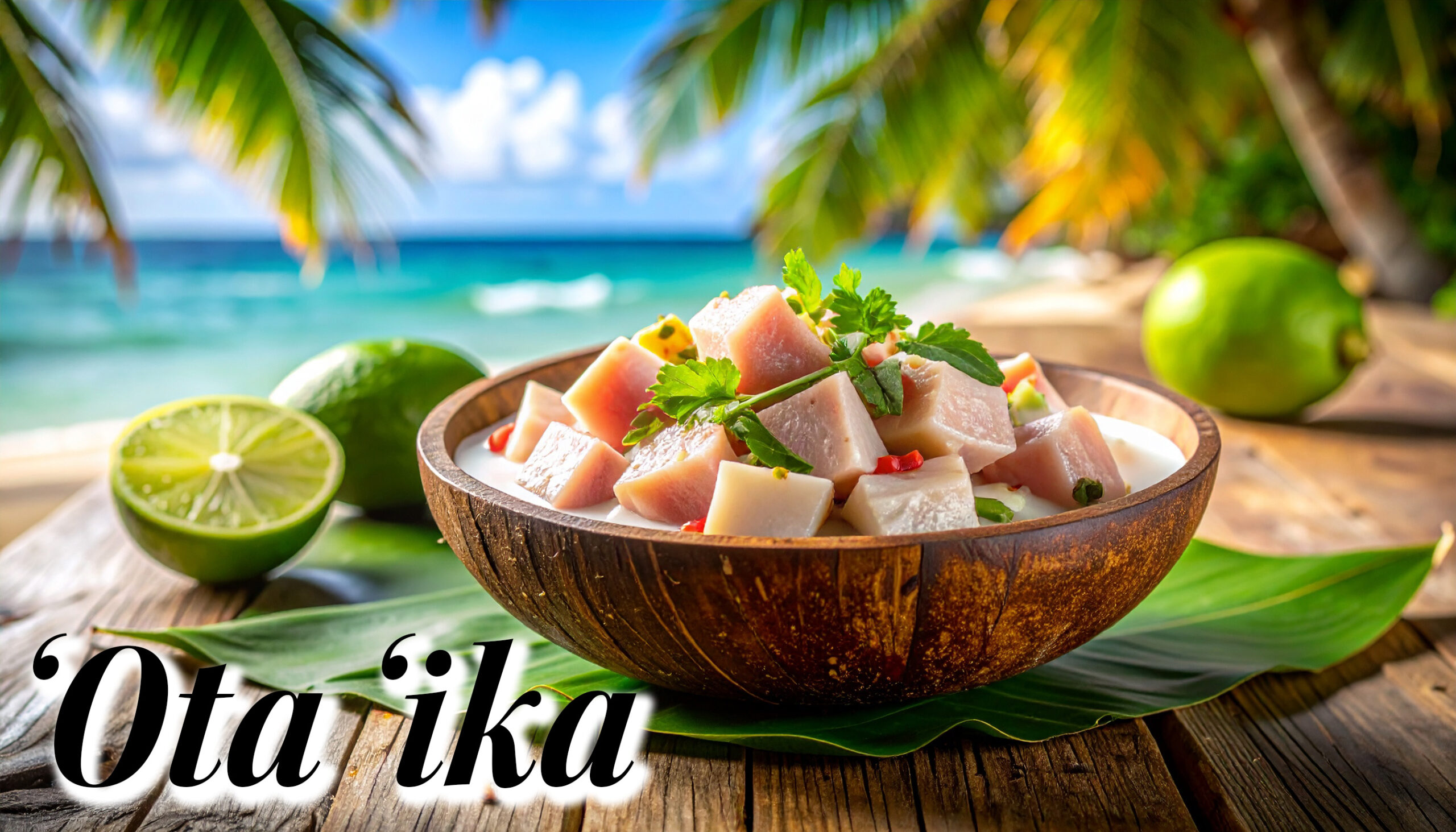
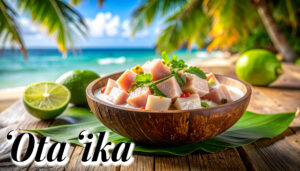
Comments